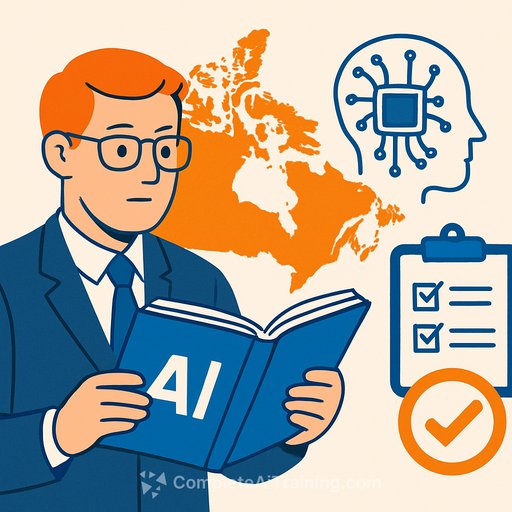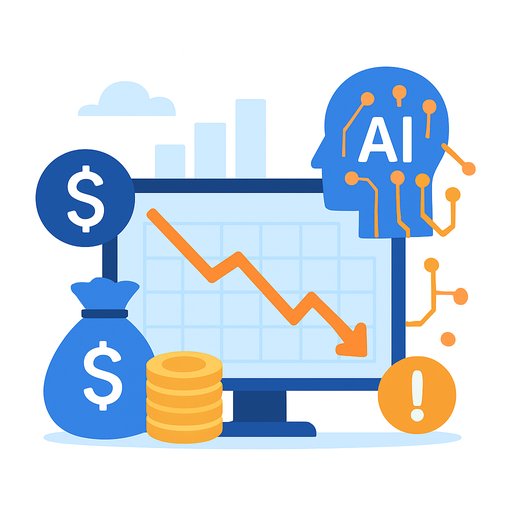AI in Insurance Is Moving From Hype to Productivity
A new report from Economist Impact sponsored by SAS signals a shift: AI in insurance is producing real productivity gains, even if full-scale change is still ahead. Leaders point to agentic AI-autonomous systems that can work with minimal supervision-as the next step toward a hybrid workforce where human and AI agents operate side-by-side across underwriting, product development, claims, and service.
"Insurers' workforces will become hybrids of human employees and agents collaborating closely, with some agents working largely independently under human oversight," said Jodie Wallis, Global Chief Analytics Officer at Manulife.
What's Working Now
- Incremental gains, visible impact: Generative AI is speeding up coding by 30% to 50%, improving customer ops, and enabling real-time analysis of cyber and climate risks. Insurtechs and cyber carriers are ahead; legacy-heavy firms are slower, often constrained by old systems and fragmented data.
- Productivity ≠ immediate savings: Freed capacity is being reinvested-building tools, handling higher claim volumes, and retraining staff for human strengths like sales and relationship management. AI is shifting from differentiator to table-stakes, especially as agentic platforms mature.
- Agility is now core: Technology, governance, and regulation are changing fast-and inconsistently across jurisdictions. Global carriers need adaptable systems, nimble operating models, and tight change management.
Agentic AI: Complement, Don't Replace
"Agentic AI has the potential to fundamentally change how insurers operate - not by replacing expertise, but by complementing it," says Andrew Pollard of SAS UK and Ireland. He notes that orchestrated agents accelerate repetitive and data-heavy work, delivering new levels of productivity and insight when combined with proven, domain-specific solutions and human judgment.
Data readiness is the constraint. "The fuel for all of this remains data… connected and available in real-time so agents can act with precision and context."
Where to Deploy First
- Underwriting: Pre-fill, triage, appetite checks, broker submission intake, risk factor extraction, and dynamic pricing support.
- Claims: First notice intake, document summarization, fraud indicators, subrogation prompts, and recovery workflows.
- Product: Rapid form updates, coverage comparisons, and scenario testing for new risks (cyber, climate-linked perils).
- Risk and compliance: Model documentation, control evidence generation, policy mapping, and gap analysis.
- Customer and broker service: Conversation summaries, intent routing, knowledge surfacing, and next-best-action.
90-Day Action Plan for Insurance Leaders
- Pick 2-3 high-frequency use cases with clear KPIs (cycle time, leakage, NPS, loss ratio contribution) and strong data availability.
- Stand up an agentic AI sandbox with human-in-the-loop review, prompt governance, and auditable logs.
- Fix data bottlenecks: unify policy, claims, billing, and document stores; set role-based access; enable real-time event streams where possible.
- Define guardrails: acceptable use, PII handling, bias checks, red-teaming, and model change control.
- Train teams in prompt skills, oversight, and exception handling; align incentives to measured outcomes.
- Publish a lightweight AI policy that aligns with local rules and your enterprise risk appetite; update quarterly.
Operating Model Shifts You'll Need
- Human + agent orchestration: Clear handoffs, escalation paths, and confidence thresholds for autonomous vs. supervised actions.
- Composable tech over monoliths: Favor platforms that let you plug in and swap agents quickly as needs change.
- Data contracts and lineage: Treat data as a product with owners, SLAs, and versioning to keep agents reliable.
- Vendor management 2.0: Evaluate latency, cost, privacy posture, finetuning options, and exit plans before you scale.
Compliance and Risk: Make It Routine
- Bias and fairness: Test underwriting and claims prompts/models across protected classes where permitted; document findings.
- Model drift: Monitor inputs/outputs; retrain or re-prompt on a defined cadence when performance slips.
- Privacy and security: Keep PII out of prompts unless tokenized or masked; enforce data residency; log all access.
- Regulatory mapping: Track local AI guidance and controls by market. The EU AI Act sets a useful benchmark for risk-based governance.
Metrics That Matter
- Speed: Cycle time in underwriting and claims, time-to-quote, time-to-first-decision.
- Quality: Leakage reduction, straight-through processing rate with QA pass, documentation completeness.
- Experience: NPS/CES for customers and brokers, adjuster/underwriter satisfaction.
- Cost and scale: Cost per task, GPU/API spend per outcome, agent utilization and deflection rates.
- Risk: Incident counts, audit findings closed on time, bias and hallucination events.
What This Means for Strategy
AI is becoming table-stakes. The winners will be the carriers that pair agentic systems with clean, connected data and disciplined change management. Think in systems: small, composable agents; clear governance; measurable outcomes.
"These agents can operate autonomously or in concert with people, delivering faster service, reducing leakage, and improving customer experiences. Most importantly, they free human teams to focus on creativity, judgement, and relationship-building - the areas where people make the biggest impact."
Upskill Your Team
If you're formalizing an AI adoption plan for underwriting, claims, or ops, equip teams with practical training. Explore curated programs by role at Complete AI Training.
Your membership also unlocks:






